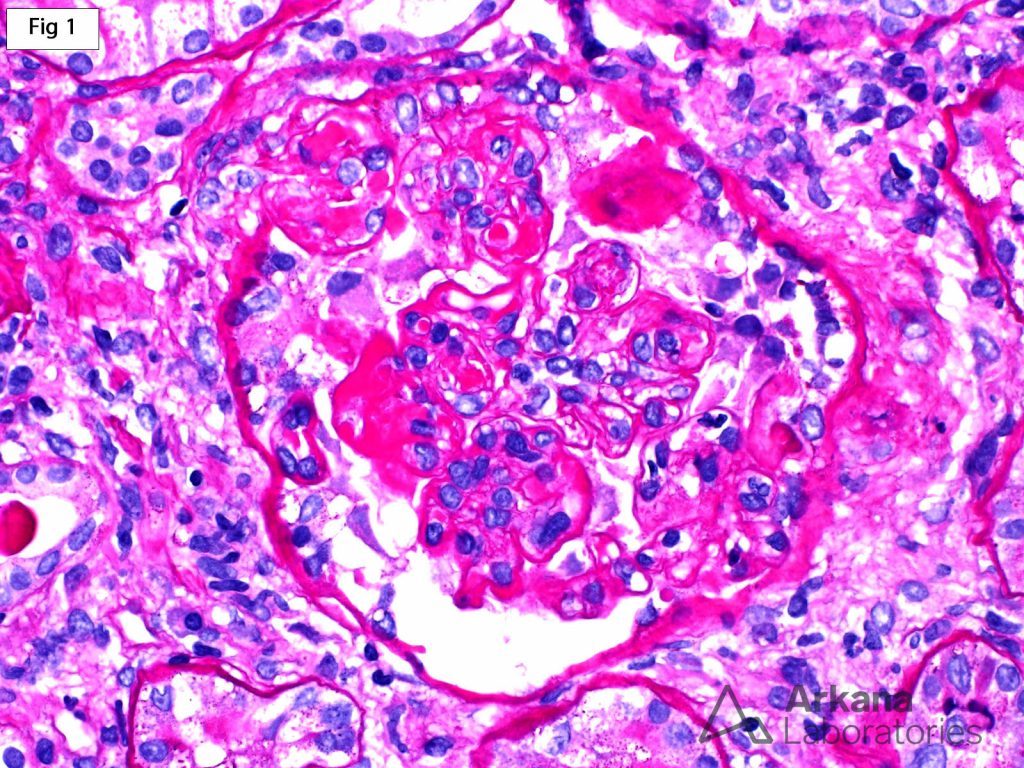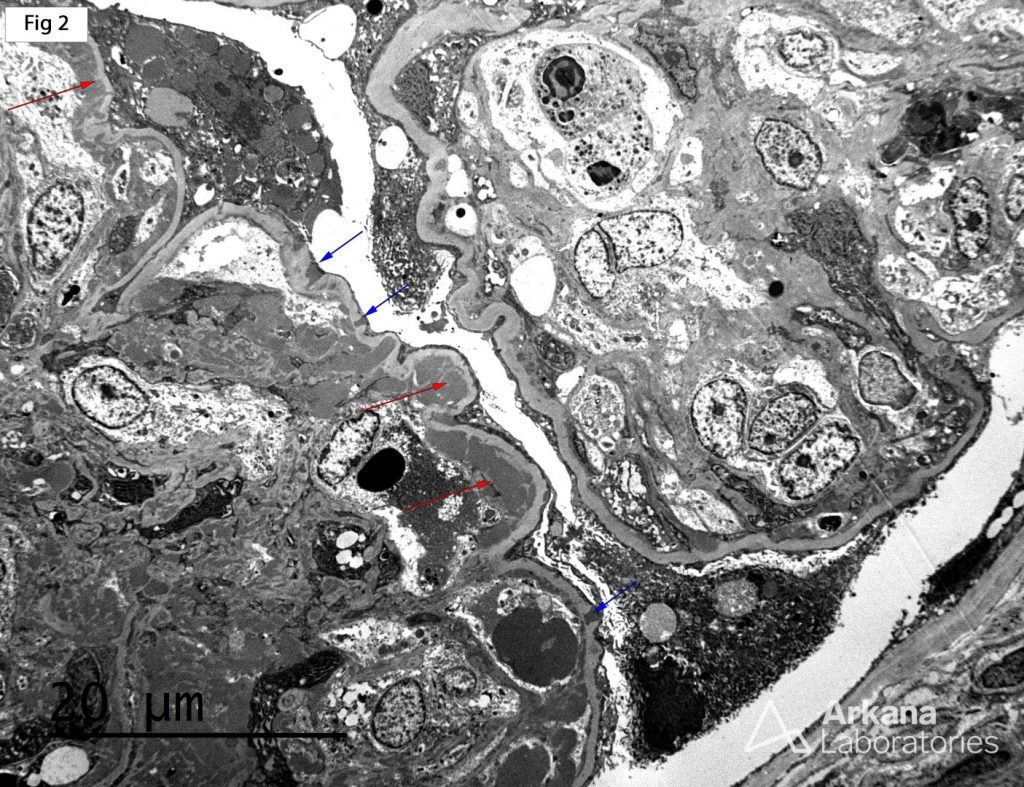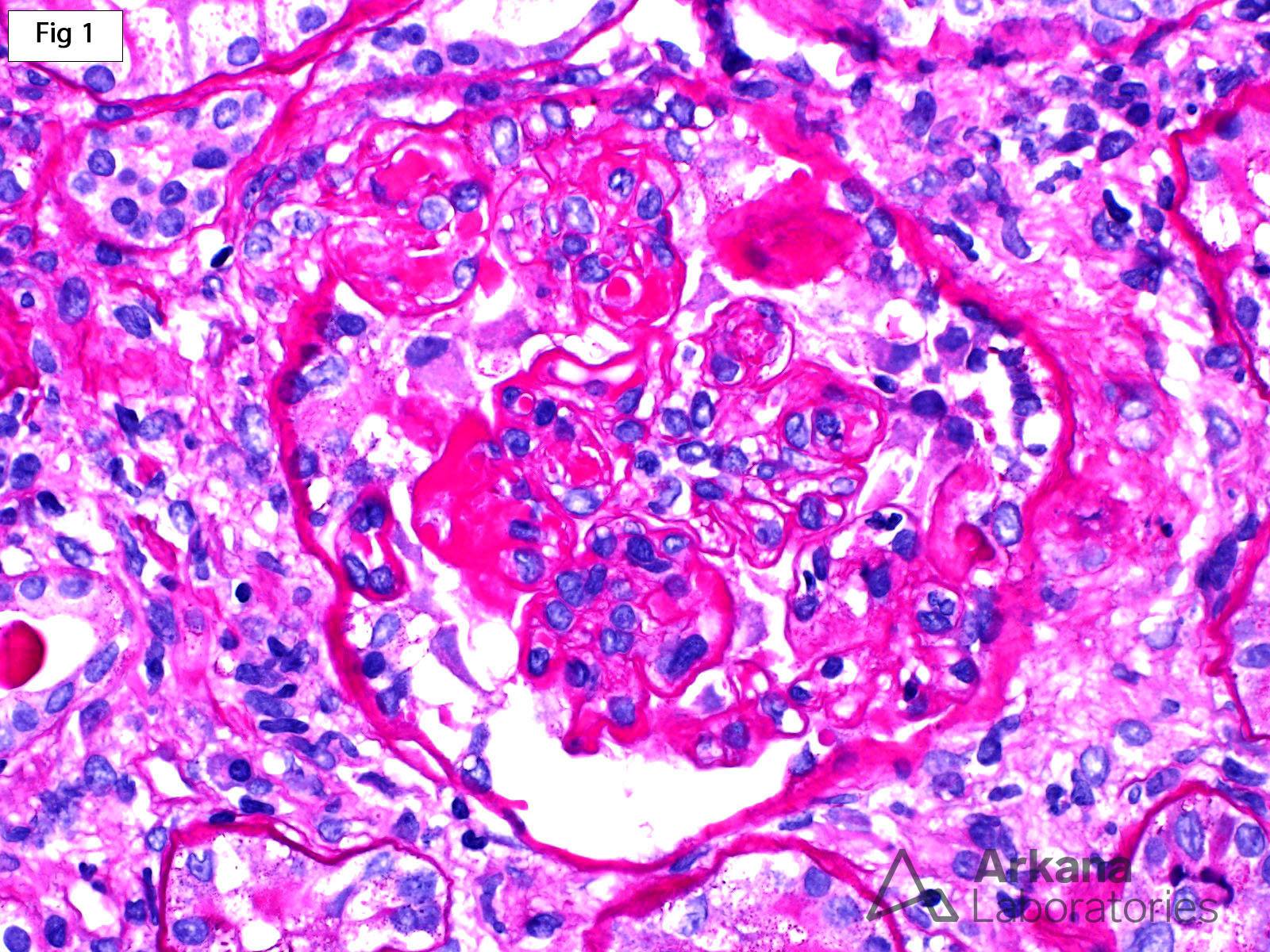
According to the ISN/RPS 2003 classification of lupus nephritis, membranous lupus nephritis (class V) is characterized by the presence of global or segmental subepithelial immune deposits with or without associated mesangial deposits or mesangial hypercellularity. Membranous lupus nephritis may occur in isolation or may coexist with other forms of active lupus nephritis such as focal (class III) or diffuse (class IV) lupus nephritis. In the presence of active glomerular lesions, scattered subepithelial deposits are common and are not diagnostic of membranous lupus nephritis (class V). In fact, in order to make a diagnosis of membranous lupus nephritis (class V) in the presence of a class III or class IV lupus nephritis, it is required for subepithelial deposits to be present in greater than 50% of the tuft of greater than 50% of the glomeruli by light microscopy or immunofluorescence. Figure 1 shows a glomerulus from a patient with known systemic lupus erythematosus displaying active lesions including endocapillary proliferation and endocapillary hyaline thrombi. Furthermore, electron microscopy (Fig 2) from the same biopsy shows frequent, large subendothelial deposits (red arrows) and few scattered subepithelial deposits (blue arrows). Given the presence of active glomerular lesions and involvement of less than 50% of the tuft by the subepithelial deposits, this case does not meet diagnostic criteria for membranous lupus nephritis (class V).

Large subendothelial deposits and few scattered subepithelial deposits
Quick note: This post is to be used for informational purposes only and does not constitute medical or health advice. Each person should consult their own doctor with respect to matters referenced. Arkana Laboratories assumes no liability for actions taken in reliance upon the information contained herein.



